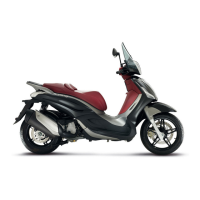
Do you have a question about the PIAGGIO LUM Beverly Sport Touring 350 ie and is the answer not in the manual?
| Displacement | 330 cc |
|---|---|
| Fuel System | Electronic injection |
| Transmission | CVT automatic |
| Front Suspension | Telescopic hydraulic fork |
| Rear Suspension | Dual hydraulic shock absorbers |
| ABS | Yes |
| Seat Height | 790 mm |
| Wheelbase | 1, 560 mm |
| Engine Type | Single-cylinder, 4-stroke, 4-valve |
| Front Brake | 300 mm disc |
| Rear Brake | 240 mm disc |
| Fuel Capacity | 13 L |
| Tires (Front) | 110/70-16 |
| Tires (Rear) | 150/70-14 |
Overview of dashboard and controls.
Details of analogue gauges and indicators.
Instructions for setting and displaying the clock time.
Explanation of digital LCD display functions and indicators.
Information on ignition switch positions and operation.
Procedure for locking the steering wheel for security.
How to operate turn signal switches for indicating turns.
Operation of the headlight switch for low beam, high beam, and flashing.
Function and operation of the engine stop switch.
Description of the anti-theft immobilizer system and its operation.
Details about master and service keys and their usage.
Explanation of the indicator LED for the immobilizer system.
General operational procedures for ignition and immobilizer system.
Step-by-step guide to programming new keys for the immobilizer.
How to open the fuel tank cap to refuel the vehicle.
Information about the vehicle's power outlet for accessories.
Methods to open the vehicle's saddle for storage access.
Locating and understanding chassis and engine identification numbers.
How to open the rear top box compartment.
Usage instructions for the retractable bag hook.
Pre-ride checks to ensure the vehicle is safe and ready for operation.
Step-by-step guide for safely refueling the vehicle with petrol.
Importance of correct tyre pressure and how to check it.
How to adjust the spring preload on the shock absorbers.
Guidelines for the initial break-in period of the new vehicle.
Detailed instructions on how to start the vehicle's engine safely.
General safety precautions for operating the vehicle.
Correct procedure for turning off the vehicle's engine.
How to use the center stand and side stand.
Basic information about the automatic transmission system.
Essential tips for safe riding practices and road awareness.
Importance of engine oil and its role in lubrication.
Procedure for checking the engine oil level.
How to add engine oil without exceeding the maximum level.
Meaning and action required when oil pressure warning light illuminates.
Step-by-step guide for changing the engine oil.
How to check and maintain the oil level in the rear hub.
Checking tyre condition, wear, and pressure.
Procedure for removing and refitting the spark plug.
Steps to access and remove the air filter for maintenance.
How to clean and maintain the air filter.
Checking and topping up the coolant level.
How to check the brake fluid level via the sight glass.
Detailed steps for topping up brake fluid.
Accessing and basic maintenance of the vehicle battery.
Proper installation and connection of a new battery.
Recommendations for battery care during extended non-use.
Location, identification, and replacement of fuses.
Specifications for various bulbs used in vehicle lighting.
How to access and replace bulbs in the front headlight assembly.
Procedure for adjusting the headlight beam alignment.
How to replace bulbs in the front turn signals.
How to replace bulbs in the rear lighting unit.
Replacing the bulb for the license plate light.
Procedure for replacing the helmet compartment light bulb.
Adjusting the rear-view mirrors for optimal visibility.
Information on the disc brake system and its maintenance.
Steps for dealing with a tyre puncture and emergency repairs.
Recommended procedures for storing the vehicle for long periods.
Guidelines for washing and cleaning the exterior of the scooter.
Common causes and solutions for engine starting failures.
Troubleshooting steps for when the engine is hard to start.
Diagnosing and resolving issues related to the ignition system.
Identifying and fixing problems causing low engine compression.
Addressing issues related to fuel consumption and engine performance.
Causes and solutions for weak or ineffective braking.
Troubleshooting problems with the vehicle's suspension system.
Identifying and resolving issues with the automatic transmission.
Detailed specifications for the vehicle's engine components.
Specifications for the vehicle's chassis, suspension, and brakes.
List and description of tools provided with the vehicle.
Important safety warnings regarding spare parts and accessories.
Periodic maintenance schedule and recommended service intervals.
List of recommended fluids, lubricants, and their specifications.

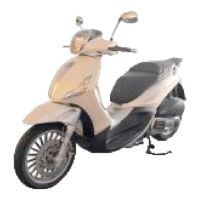
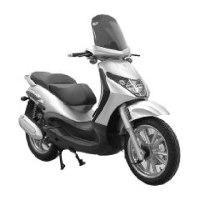

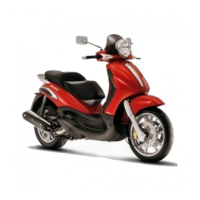
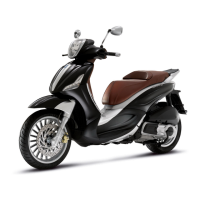
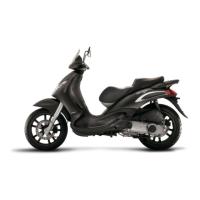


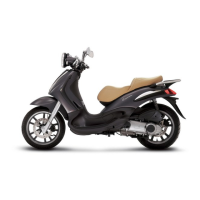
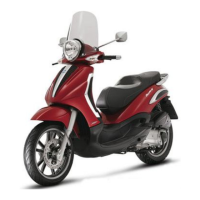
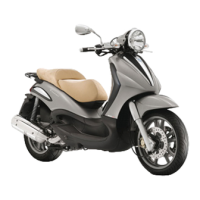
